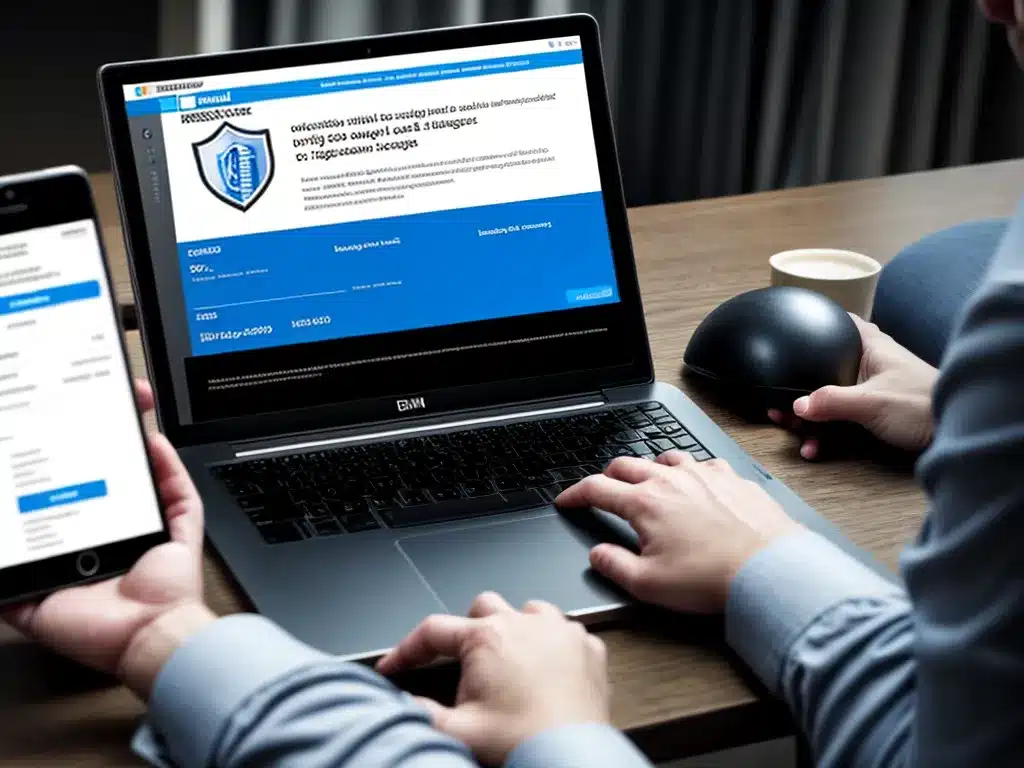
Introduction
A dangerous new form of malware known as a banking trojan has emerged, posing a significant threat to online banking users worldwide. This nasty trojan steals sensitive login credentials and financial information, enabling cybercriminals to secretly drain bank accounts and commit fraud. As I investigate this emerging threat, it is clear that all online banking users should be aware of how this Trojan works and take steps to protect themselves.
How the Banking Trojan Infects Computers
The initial infection typically starts with a phishing email containing a malicious attachment or link. If the user clicks, the banking trojan is downloaded onto their computer. Once installed, the trojan lies in wait, monitoring the victim’s activity. As soon as the user visits their online banking website, the trojan activates, injecting itself into the web session.
This allows the trojan to secretly manipulate what the user sees on their bank’s website. For example, it can alter login pages to steal account credentials. It may also add fake pages requesting sensitive info such as credit card numbers, account balances, phone numbers, and more. This stealthy insertion process is known as web injection, and it enables the trojan to trick users into handing over the keys to their bank account.
“The banking trojan injects itself into the user’s web sessions with their bank. This allows it to manipulate what the user sees and steal their confidential data.”
How Stolen Data is Exfiltrated
Once the banking trojan has intercepted the user’s login credentials, credit card data, or other sensitive information, it transmits this data back to the attacker’s servers. This is known as data exfiltration. The attacker can then leverage the stolen data to siphon money from the victim’s bank account via fraudulent wire transfers or other methods.
“The trojan secretly sends all the data it steals back to the attacker’s servers. This enables them to access bank accounts and commit fraud.”
In some cases, the banking trojan may even initiate fraudulent transactions directly from the infected computer. By piggybacking off the victim’s real online banking session, it can create fake transfers and payments to accounts controlled by the attacker.
Infection Vectors Used to Spread the Trojan
Cybercriminals employ a variety of deceptive tactics to propagate this banking trojan and infect new victims:
-
Phishing Emails – As noted above, the primary infection method is phishing emails with malicious attachments, often disguised as shipment notifications or voicemail messages.
-
Compromised Websites – The trojan may be downloaded via malware planted on websites that have security vulnerabilities.
-
Contaminated Advertisements – Malvertising campaigns can redirect users to sites hosting the trojan.
-
Social Engineering – Criminals post links on social networks, chat apps, forums, etc., tricking users into infecting themselves.
“Phishing, drive-by downloads, malvertising, and social engineering are common infection vectors used to spread this banking trojan to victims.”
No matter how infection occurs, the end result is the banking trojan being installed on the victim’s computer, allowing the adversary to monitor and manipulate their online banking activity.
Technical Analysis of the Trojan’s Capabilities
Examining the code and capabilities of this banking trojan reveals an intricate malware system:
-
Modular Design – Uses a plugin-based architecture to dynamically load features like keylogging, screenshots, and remote control. This makes the trojan highly configurable for different objectives.
-
Web Injects – Leverages advanced techniques such as man-in-the-browser attacks and XML rewriting to secretly modify pages and insert additional fields.
-
Stealth – Employs evasion and anti-analysis tactics to avoid detection by antivirus software and security scanners.
-
Anti-Forensics – Clears logs, browser history, and other artifacts that could reveal its presence.
-
Remote Administration – Phones home to command and control servers to receive configurations and send stolen data.
-
Targeted – Some variants focus on specific banks and regions, tailoring injections to local banks.
“Technical analysis shows this banking trojan uses advanced techniques to manipulate web traffic, evade detection, and cover its tracks.”
The level of sophistication demonstrates why this trojan is so dangerous and difficult to detect.
Protecting Yourself from the Banking Trojan
While this banking trojan is stealthy and complex, there are steps users can take to avoid infection and protect their financial data:
-
Avoid phishing – Don’t click links or attachments in unsolicited emails. Watch for typos and other signs of phishing.
-
Update software – Maintain an updated OS, browser, plugins, etc. Software updates patch vulnerabilities cybercriminals exploit.
-
Use Antivirus – Ensure you have a reputable AV program installed and updated. Use alongside firewall and anti-malware software.
-
Monitor accounts – Routinely check bank and credit card statements for any unauthorized activity. Report discrepancies immediately.
-
Unique passwords – Have a unique, complex password for every account. Use a password manager if needed.
“With proper precautions, users can reduce their risk of falling victim to this nasty new banking trojan.”
No single measure will completely eliminate risk, but layers of security will significantly impede the trojan’s operation. Being vigilant and proactive is key to protecting your finances.
Conclusion
This new banking trojan exemplifies the escalating sophistication of cybercrime threats against consumers. Using advanced techniques, it bypasses security controls to manipulate online banking sessions and steal financial data. While challenging to detect and defend against, users can take steps like avoiding phishing and using unique passwords to improve their safety. As the cybersecurity arms race continues, it is crucial that users stay informed and diligent in order to protect their digital lives.












